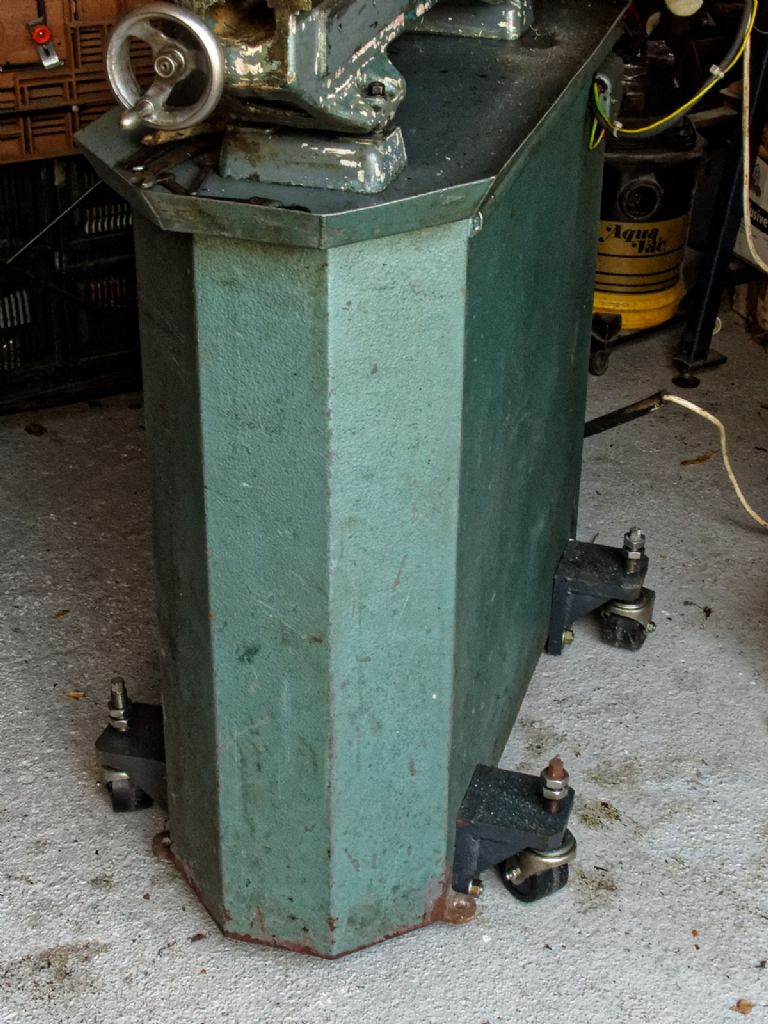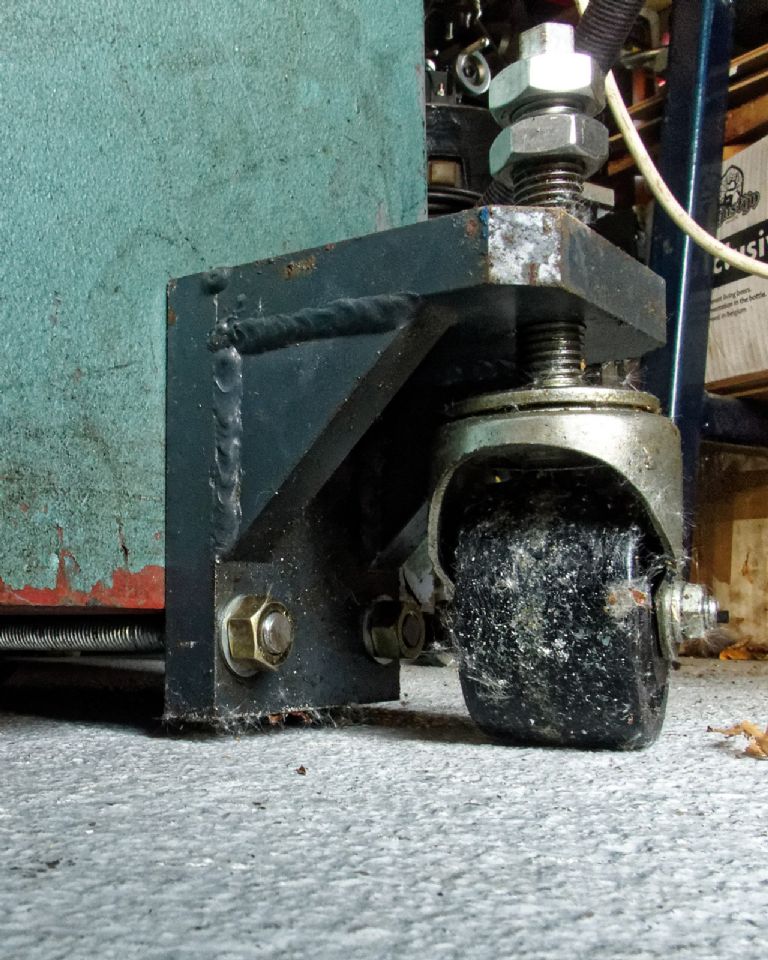I've just moved a workshop myself and also had a Warco 1330 delivered, which I needed to move into its final resting place; Also recently helped a friend move a large Elliot Turret mill and a Large lathe, Triumph I think. I've also had a fair amount of practice moving 10' x 4'6" equipment racks around at work, up to about 3/4 ton.
As with many of the above comments from other contributors, caution is advised. Yes it's good that metal to metal friction is fairly low, which helps one move stuff about, but it also allows things to go wrong very quickly.
You obviously don't need telling that you lathe will be fairly top heavy, so side slopes are to be treated with caution, and even on the level, things can still fall over. For that reason, I'd be reluctant to have longitudinal bars for the cabinet to slide along; if it slides off them, it's well on the way to falling over, due to the momentum.
Don't be afraid to have an extra rope(s) transverse to the bed, going to solid anchors, one either side, to ensure it all stays upright.
Steel rollers transverse to the bed work well enough; on a concrete floor I prefer thinner solid ones, but over an uneven surface, a larger diameter can be advantageous as it allows the roller to climb over the odd pebble etc. If a roller stops suddenly, there's a danger that the lathe can carry on going by sliding over the now stationary roller, due to the aforementioned low friction.
I don't know the layout of your garden, so am reluctant to give specific advice, more just food for thought. If your cabinet has suitable bolting down points, how about using them to attach two pieces of box section, transverse to the bed, with a wheel on each end. Anything to widen the "wheelbase" has to help stability.
Personally, this is the only way I'd use longitudinal rails to slide the lathe along, and then only angle iron, rather than scaff tube, unless the latter is somehow constrained to prevent it rolling.
Engine cranes, whilst having a decent capacity, are also quite cumbersome with something as wide and long as a lathe, particularly if the ground beneath is less than ideal. However, if you have one, maybe it could temporarily loan its castors to your two lengths of box section; they should have the capacity.
Here's how I've done stuff recently, utilising some specially designed angle brackets which were attached when I took delivery of a large and heavy cabinet at work, not sure of the weight but well over a ton.
I re-purposed the brackets, and use a couple of lengths of threaded rod at each end, to form a pair of cradles in which the lathe sits, shown here on a Myford, but have been used on bigger stuff such as my large fire safe. I think I used them on the big Warco as well. 600+Kg



If enlisting help, I always make it clear that only one person is in charge at any one time; it may or may not be me depending on the individual logistics. I prefer a rule that states anyone can shout Stop, but only the person formally in charge, at any one time, says Go. Discuss the plan in detail before moving anything, and make sure everyone fully understands it.
Also, its perfectly reasonable to hand control to someone else part way through a move, such as going through a door. I always do that formally, even if it does sound officious, i.e. "John, you're now in control"; make sure they've heard you and confirmed/agreed.
N.B. Ensure all personnel have an escape route in case it goes pear shaped.
Good Luck
p.s. whereabouts roughly are you in the country?
Edited By peak4 on 29/10/2019 19:16:14
Peter Simpson 1.









